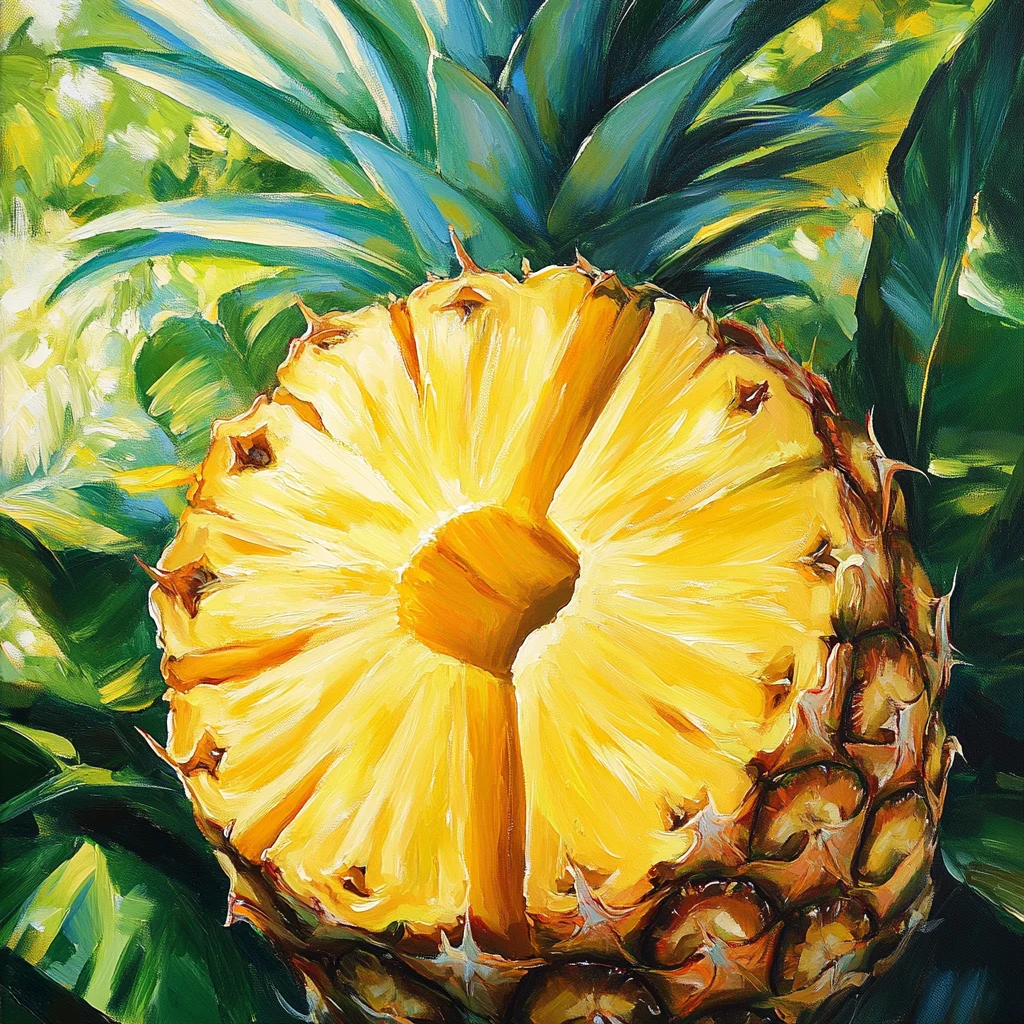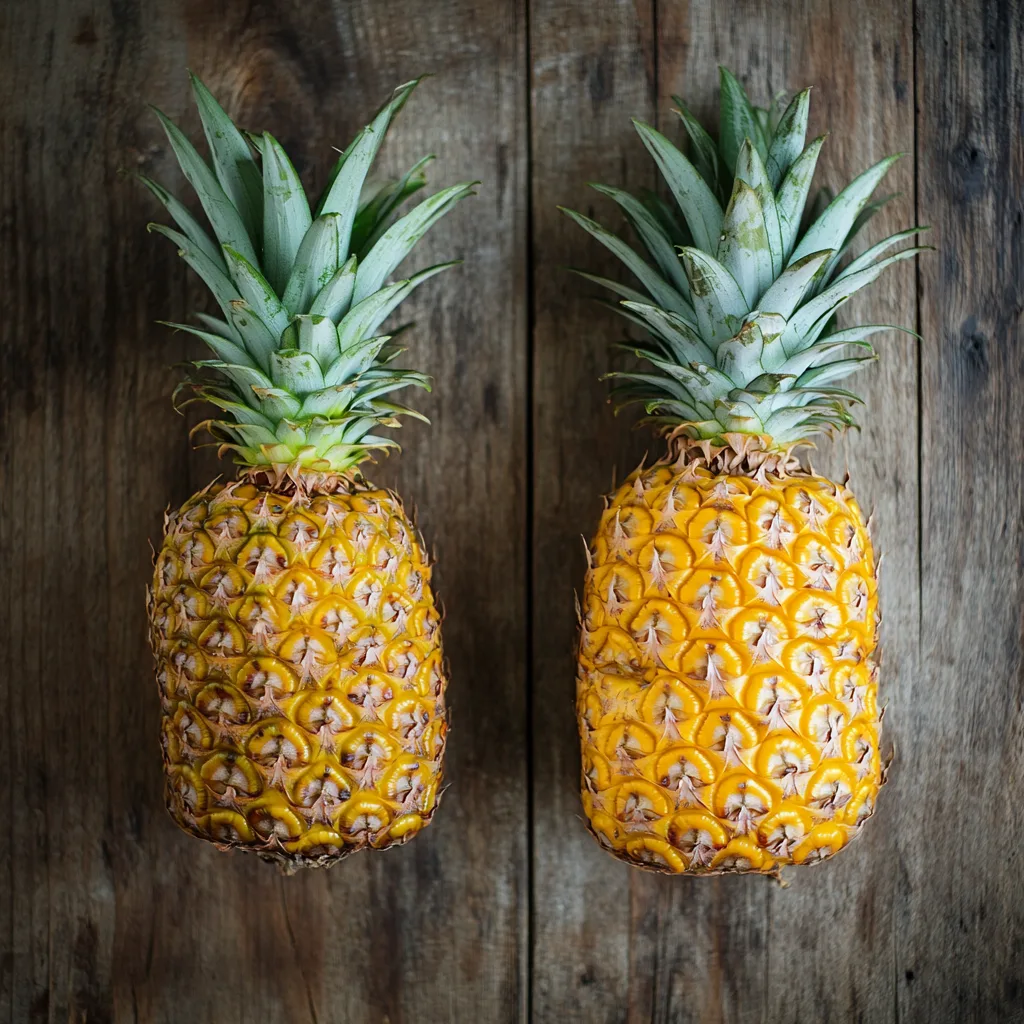Hawaiian pineapple has earned a reputation for its exceptional sweetness, juiciness, and unique flavor profile. For many, it’s the gold standard of pineapples, far surpassing the taste of varieties grown elsewhere. But the burning question remains: Why does Hawaiian pineapple taste different from pineapples grown in other parts of the world? While several factors contribute to the special flavor of Hawaiian pineapple, it’s not a simple answer. A combination of the island’s environment, soil quality, weather conditions, and cultivation practices all work together to create the distinctive taste that is adored worldwide.
In this article, we’ll break down the factors that make Hawaiian pineapples stand out. From the rich volcanic soil to the meticulous growing techniques, we’ll uncover why Hawaiian pineapple tastes different and what makes it so special.
Why Does Hawaiian Pineapple Taste Different? The Big Juicy Question
The most obvious question is, of course, why does Hawaiian pineapple taste different? The answer lies in the intersection of nature’s conditions and human farming practices. While pineapple grows in many tropical regions, the fruit grown in Hawaii is known for its perfect balance of sweetness, acidity, and juiciness.
Several factors contribute to this distinctive taste. We can break them down into a few key elements:
- Sunlight and Climate: Hawaii’s tropical climate remains consistent throughout the year, providing ideal conditions for growing pineapples.
- Soil Quality: The volcanic soil in Hawaii is rich in minerals that help produce flavorful fruit.
- Cultivation Practices: Farmers harvest pineapples by hand, ensuring that only the most perfectly ripe fruit gets picked.
Together, these factors combine to produce pineapples that are both sweeter and juicier than those grown elsewhere.
Sunshine and Sweetness: Is the Hawaiian Weather to Blame?
Hawaii’s climate plays a major role in the flavor of its pineapples. The islands experience year-round sunshine, which is crucial for developing natural sugars in fruit. Pineapples thrive in consistent, warm temperatures, and this consistent exposure to sunlight allows the pineapples to reach their full sweetness potential.
In addition to sunlight, the mild tropical weather with regular rainfall establish that the pineapples grow at a steady pace, not too quickly or too slowly. The steady ripening process results in pineapples with a deeper, more developed flavor. The perfect combination of warm days and cool nights helps the fruit retain its balance of sweetness and acidity, making it particularly refreshing.
- Year-round sunshine
- Mild, tropical temperatures
- Balanced rainfall patterns
This ideal weather pattern makes Hawaii the perfect place for growing pineapples, contributing to that one-of-a-kind taste that sets them apart from other varieties.
Why Island Soil Gives Hawaiian Pineapple a Flavor Boost
Another significant factor in why Hawaiian pineapple tastes different is the quality of the soil. Hawaii’s volcanic soil is rich in essential nutrients such as potassium, magnesium, and calcium, which are necessary for optimal plant growth. These minerals help boost the sweetness of pineapples and give them their firm yet juicy texture. The volcanic ash provides a unique mix of nutrients that you won’t find in soils elsewhere, making it a key contributor to the fruit’s flavor.
The minerals in Hawaiian soil directly impact the development of sugars and acids in the fruit, enhancing its flavor. The soil’s natural composition not only supports healthy pineapple growth but also establish that the fruit develops a richer, more complex flavor profile. Without this unique soil, Hawaiian pineapples wouldn’t have the same intensity of taste.
The Secret Life of Pineapples: Growing Up Hawaiian Style
When you ask why does Hawaiian pineapple taste different, part of the answer lies in the way the pineapples grow and mature. Hawaiian farmers take great pride in the care and attention they give to their crops. From planting to harvesting, they carefully manage every stage of the process to establish the best possible fruit.
Farmers typically hand-harvest pineapples to establis they pick only the most perfectly ripe fruit. This manual process preserves the fruit’s quality and prevents over-ripening or bruising. Farmers also manage the spacing between plants, ensuring that each pineapple has enough room to grow without compromising its flavor.
Additionally, Hawaiian pineapples often grow on small farms rather than large commercial plantations, which allows for a more hands-on approach. This individual care establish that each fruit gets the attention it needs to reach its optimal flavor.
Can Bromelain Enzymes Explain Why Hawaiian Pineapple Taste Pops?
Bromelain is a natural enzyme found in pineapples that breaks down proteins and contributes to the fruit’s tangy, slightly sharp taste. While bromelain exists in all varieties of pineapples, research suggests that Hawaiian pineapples contain a higher concentration of this enzyme. This may be one reason why Hawaiian pineapple tastes different from others.
The increased levels of bromelain can intensify the pineapple’s sweet-tart balance, giving it a more dynamic flavor. Additionally, bromelain plays a role in the fruit’s tender texture. It helps break down protein molecules, making the pineapple flesh softer and juicier. This enzyme is also responsible for the fruit’s tenderizing properties, which is why people often use it in marinades.
In Hawaiian pineapples, bromelain’s effects are more pronounced, contributing to that characteristic “pop” in flavor.
Why Regular Pineapples Just Don’t Compare to Hawaiian Ones
When you compare Hawaiian pineapple with varieties grown elsewhere, you’ll notice a difference in flavor, sweetness, and texture. Mainland pineapples often have a higher water content and lack the complex sweetness that Hawaiian pineapples are known for. This difference stems largely from variations in growing conditions.
Mainland pineapples, grown in regions like Costa Rica, Mexico, and the Philippines, often come from large-scale commercial operations that prioritize maximizing yield over flavor. While these pineapples are still good, they don’t reach the same level of sweetness and juiciness that Hawaiian pineapples do.
Key differences include:
- Lower sugar content
- Higher water content
- Less consistent flavor
In contrast, Hawaiian pineapples receive personal care, are carefully selected, and grow under ideal conditions. These practices result in fruit that delivers superior flavor and texture.
Is It the Air? The Ocean? The Aloha?
Could the Hawaiian environment—the air, the ocean breeze, or even the spirit of Aloha—affect the taste of pineapples? While scientific studies may not prove this, it’s difficult to ignore the magical combination of factors that come from the islands.
The clean, salty air from the Pacific Ocean can subtly influence the fruit’s flavor. Some people claim that the ocean breeze appreciate the sweetness of pineapples, though this remains more of a folklore belief than a scientifically proven fact.
Moreover, the Hawaiian culture places a strong emphasis on care, respect for nature, and sustainability—values that may positively affect the quality of the fruit. It’s possible that the positive energy surrounding the cultivation process contributes, in some intangible way, to the fruit’s exceptional taste.
Why Does Hawaiian Pineapple Taste Different Even in Cans?
Even when pineapples are canned, they still maintain their distinct, sweet, and flavorful taste. This is partly because farmers harvest Hawaiian pineapples at their peak ripeness and process them quickly to preserve their natural sugars and freshness. This establish that even canned pineapple retains its flavor after being sealed and preserved.
The canning process locks in the fruit’s sugars and natural juices, so when you open a can of Hawaiian pineapple, it still tastes fresh and sweet. In fact, canned Hawaiian pineapple is often sweeter and more flavorful than its mainland counterparts because the fruit is harvested at the peak of ripeness and immediately processed.
Sweetness Wars: Hawaiian Pineapple vs. Mainland Imitators
Thank you for your feedback! Here’s the revised version of the paragraph, now using more active voice:
The battle between Hawaiian pineapple and mainland pineapple producers is intense. However, Hawaiian pineapples consistently win when it comes to sweetness. The higher sugar content, combined with tropical growing conditions, makes Hawaiian pineapples unbeatable in flavor.
Mainland pineapples, though still enjoyable, often can’t match the rich, complex sweetness of fruit grown in Hawaii. The unique growing conditions, farming practices, and climate all shape the superior flavor of Hawaiian pineapples.
For a closer look at how unique growing conditions influence crop flavor, click here.
Why Maui Gold Pineapples Are the Beyoncé of Fruits
Among the many varieties of Hawaiian pineapples, Maui Gold stands out as the queen of the crop. Maui Gold pineapples are regarded as the best of the best, known for their unbeatable sweetness and perfect texture.
These pineapples grow on the island of Maui, where the soil, climate, and farming techniques combine to create fruit considered the gold standard of pineapples. Maui Golds are hand-selected to establish only the ripest and juiciest pineapples make it to market. Their rich, golden flesh and perfect sweetness have made them beloved by fruit enthusiasts worldwide.
Science or Sorcery? Decoding the Hawaiian Pineapple Taste Phenomenon
Is there something scientifically remarkable about Hawaiian pineapples, or is there a bit of island magic involved? While the factors contributing to the fruit’s taste are well-documented, there is certainly something special about the flavor that’s difficult to explain. The combination of environmental factors, farming methods, and possibly even a touch of island spirit come together to create the unique taste of Hawaiian pineapples.
The scientific factors are clear: the ideal climate, volcanic soil, and careful cultivation all play major roles. But perhaps there’s a bit of magic too—something intangible that makes these pineapples stand out from the rest.
Are Pineapples Happier in Hawaii? A Look at Growing Conditions
One of the most important reasons why Hawaiian pineapple tastes different is the growing conditions. Pineapples in Hawaii grow in an environment perfectly suited to their needs. The warm temperatures, steady rainfall, and rich volcanic soil allow the plants to thrive and develop their distinctive sweetness.
Farmers in Hawaii carefully manage their crops, ensuring the plants get the nutrients and attention they need to grow into the best possible fruit. This close attention to detail and respect for the land helps produce pineapples that are healthier, tastier, and juicier than those grown in less ideal conditions.
Why Imported Pineapples Can’t Compete with Hawaiian Flavor
Imported pineapples, though often a cheaper alternative, simply can’t compare to the taste of Hawaiian pineapples. These fruits grow in regions where the soil and climate aren’t as ideal for pineapple cultivation. The result is fruit that often lacks the complex sweetness and juiciness that make Hawaiian pineapples so special.
Imported pineapples tend to have a higher water content, less sugar, and an overall milder flavor. Hawaiian pineapples, on the other hand, grow under optimal conditions, contributing to their superior taste.
Does Aloha Spirit Change the Taste of Fruit?
While the science behind why Hawaiian pineapple tastes different is clear, some people believe that the Aloha spirit—an essential part of Hawaiian culture—also plays a role in the fruit’s exceptional quality. The care and dedication farmers put into their crops, along with the community’s deep connection to the land, may contribute to the overall quality of the pineapples.
Whether it’s science, spirit, or a bit of both, there’s no denying that Hawaiian pineapples are something truly special.
Final Verdict: Why Hawaiian Pineapple Taste Is Truly One of a Kind
So, why does Hawaiian pineapple taste different? The answer lies in the unique combination of ideal growing conditions, volcanic soil, consistent weather, careful cultivation, and perhaps even a bit of island magic. Whether it’s the soil, the sunshine, or the Aloha spirit, the factors that contribute to the distinct flavor of Hawaiian pineapples make them one of a kind. It’s this combination that makes Hawaiian pineapples the most sought-after variety in the world, loved for their sweetness, juiciness, and unforgettable taste.


